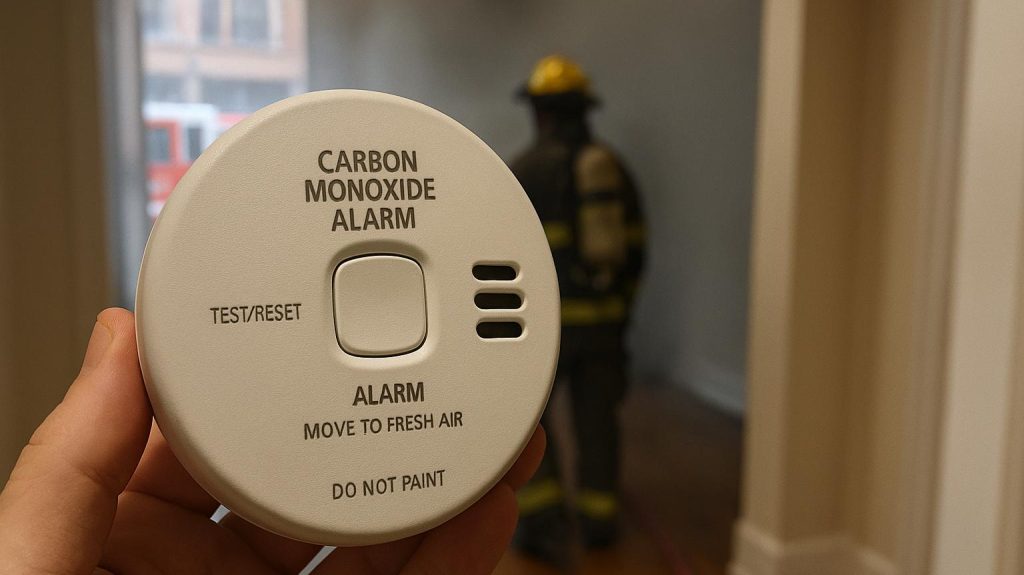A potentially deadly situation was averted in downtown London on July 17th when a carbon monoxide alarm alerted occupants to dangerous gas levels in a building on the 700 block of Richmond Street.
The London Fire Department responded to the carbon monoxide incident, finding concerning readings of 50 parts per million (PPM) of carbon monoxide and 6.5 PPM of hydrogen cyanide (HCN) in the building. These levels were serious enough to warrant a complete evacuation of the structure.
Fire crews worked quickly to secure the scene, with Truck 6 called in specifically to assist with ventilation efforts. The building’s occupants were safely evacuated, and thankfully, no injuries were reported during the incident.
Enbridge Gas was requested to attend the scene to investigate the source of the carbon monoxide leak. The utility company’s involvement suggests the incident may have been related to a gas appliance or heating system malfunction.
What could have been a tragic situation became a success story thanks to properly functioning carbon monoxide detection equipment. The alarm system worked exactly as designed, providing the early warning that likely prevented serious harm or death.
Carbon monoxide is often called the “silent killer” because it’s completely undetectable to human senses – you can’t see it, smell it, or taste it. This invisible threat makes working CO alarms absolutely critical for any building that uses gas appliances, fireplaces, or attached garages.
The fire department’s response was comprehensive, with crews remaining on scene until they could confirm the building was safe. After thorough ventilation and monitoring, readings eventually dropped to zero for both carbon monoxide and hydrogen cyanide.
Richmond Street was temporarily affected as emergency crews worked to resolve the situation safely. The London Fire Department asked the public to avoid the area during the response to allow crews to work without interference.
The incident serves as a real-world reminder of why carbon monoxide detectors are required by law in residential buildings and strongly recommended for commercial properties. These devices cost relatively little but can mean the difference between life and death.
Fire officials have long emphasized that carbon monoxide poisoning can happen quickly and without warning. Early symptoms like headaches, dizziness, and nausea are often mistaken for flu or other common illnesses, making detection equipment the most reliable protection.
The building was eventually returned to the care and control of Enbridge Gas once fire crews confirmed safe conditions. The utility company would be responsible for identifying and addressing the root cause of the gas leak.
London’s downtown core sees regular emergency responses, but carbon monoxide incidents require specialized equipment and expertise to handle safely. The fire department’s ventilation trucks are specifically equipped with fans and monitoring equipment designed for these types of calls.
The July 17th incident occurred during regular business hours, which meant the building was likely occupied when the alarm sounded. Had this happened overnight or during a weekend, the outcome could have been very different without people present to hear and respond to the warning.
Carbon monoxide leaks can develop from various sources including faulty furnaces, water heaters, generators, or vehicles running in enclosed spaces. Regular maintenance of gas appliances and proper ventilation are key prevention measures.
The fire department’s final update confirmed that both carbon monoxide and hydrogen cyanide readings had returned to zero throughout the building before crews cleared the scene.

